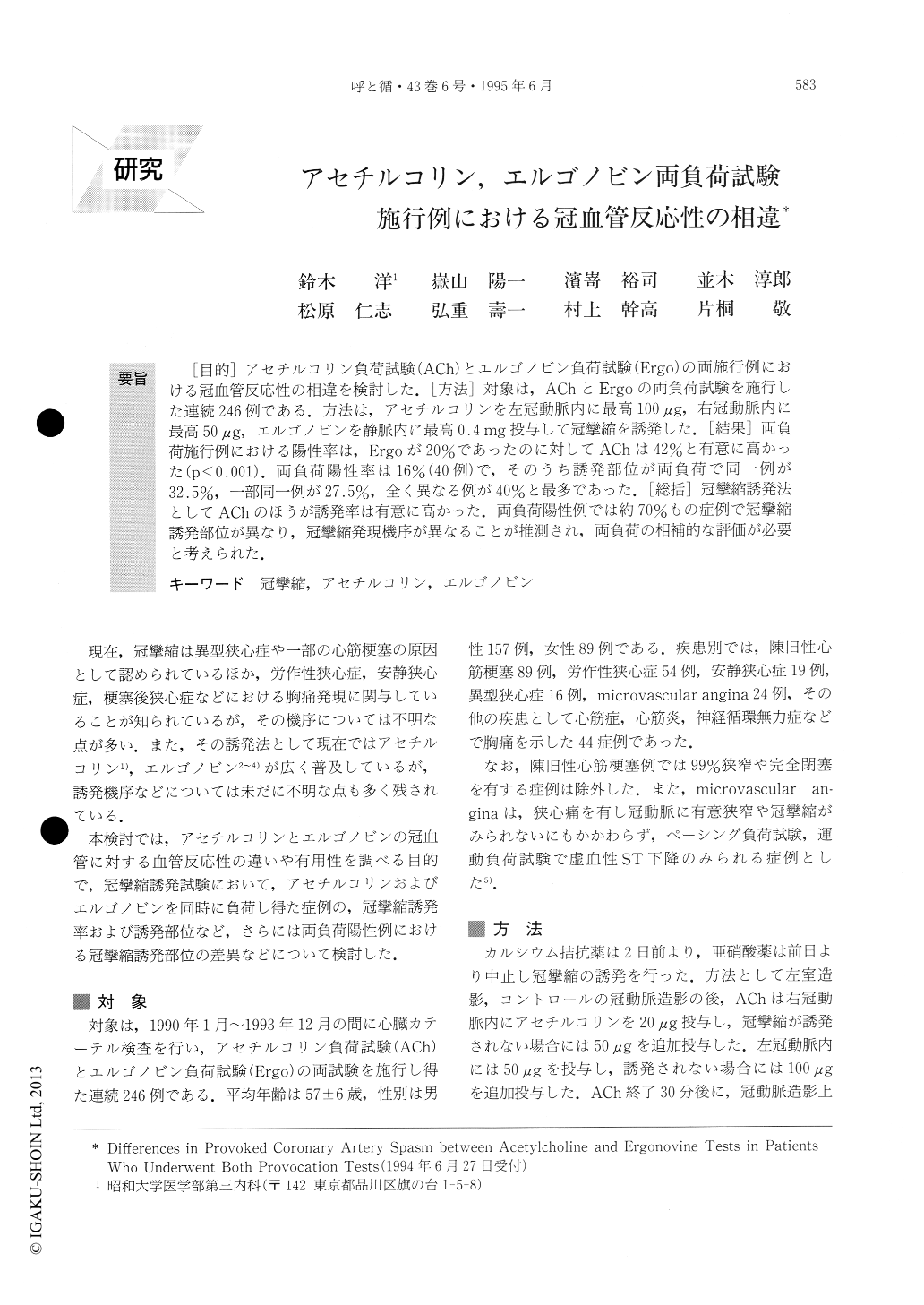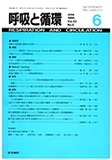Japanese
English
- 有料閲覧
- Abstract 文献概要
- 1ページ目 Look Inside
[目的]アセチルコリン負荷試験(ACh)とエルゴノビン負荷試験(Ergo)の両施行例における冠血管反応性の相違を検討した.[方法]対象は,AChとErgoの両負荷試験を施行した連続246例である.方法は,アセチルコリンを左冠動脈内に最高100μg,右冠動脈内に最高50μg,エルゴノビンを静脈内に最高0.4mg投与して冠攣縮を誘発した.[結果]両負荷施行例における陽性率は,Ergoが20%であったのに対してAChは42%と有意に高かった(p<0.001).両負荷陽性率は16%(40例)で,そのうち誘発部位が両負荷で同一例が32.5%,一部同一例が27.5%,全く異なる例が40%と最多であった.[総括]冠攣縮誘発法としてAChのほうが誘発率は有意に高かった.両負荷陽性例では約70%もの症例で冠攣縮誘発部位が異なり,冠攣縮発現機序が異なることが推測され,両負荷の相補的な評価が必要と考えられた.
To investigate differences in coronary arterial responses to spasm provoked by acetylcholine (ACh) and that provoked by ergonovine (Ergo) tests, we examined rates of provoked coronary artery spasm in patients who underwent both ACh and Ergo, and compared the positive sites of coronary artery spasm in patients showing positive in both tests. This study consisted of 246 consecutive patients who underwent both tests during cardiac catheterization. ACh, a maximum dose of 100 μEg was injected into the left coronary artery and 50 μEg was injected into the right coronary artery. Ergo, a maximum dose of 0.4mg was administered intravenously. Coronary artery spasm was defined as positive when it resulted in more than a 75% reduction in diameter of the arteries associated with concomitant chest pain and/or ischemic ST-segment changes on ECG. Coronary artery spasm was provoked in 42% by ACh compared with 20 % by Ergo (p<0.001) in patients who underwent both tests, and 16% (40cases) showed positive in both tests. In 40 cases showing positive in both tests, the site of provo-ked spasm was similar in 32.5% (13 cases) of the patients, partly similar in 27.5% (11 cases), and quite different in 40% (16 cases). The rate of spasm provo-ked by ACh was significantly higher than that provoked by Ergo. It is suggested that the mechanism by which coronary spasm is provoked might differ according to whether the agent is ACh on Ergo, because spasms were provoked at different sites in about 70 % of the patients examined by both tests. Therefore, both provocation tests would be necessary for a more precise and definite diagnosis of coronary artery spasm.

Copyright © 1995, Igaku-Shoin Ltd. All rights reserved.


